
Chemical Product and Process Modeling
Scope & Guideline
Pioneering research in chemical product simulation and process optimization.
Introduction
Aims and Scopes
- Process Modeling and Simulation:
The journal emphasizes the development and application of mathematical models and computational simulations to analyze and optimize chemical processes, including reactor design, heat exchangers, and separation processes. - Energy Efficiency and Sustainability:
Research aimed at improving energy efficiency and sustainability in chemical processes is a core focus. This includes studies on energy consumption reduction, waste minimization, and the utilization of renewable resources. - Machine Learning and Artificial Intelligence Applications:
The integration of machine learning and AI techniques in modeling chemical processes and optimizing operational parameters is increasingly featured, showcasing innovative methodologies to enhance predictive capabilities. - Thermodynamic and Kinetic Analysis:
The journal publishes work that explores thermodynamic properties and kinetic behaviors of chemical reactions, particularly in the context of biomass gasification, catalysis, and material synthesis. - Environmental Impact Assessment:
Research examining the environmental implications of chemical processes, including pollutant removal and resource recovery, is a significant area of interest, highlighting the journal's commitment to sustainable practices.
Trending and Emerging
- Integration of Machine Learning in Chemical Engineering:
An increasing number of studies are utilizing machine learning algorithms to enhance process modeling, predictive maintenance, and optimization, indicating a shift towards data-driven approaches in chemical process engineering. - Focus on Renewable and Alternative Energy Sources:
Research on the development and optimization of processes related to renewable energy sources, such as biofuels and hydrogen production from biomass, is gaining significant attention as sustainability becomes a critical focus. - Advanced Material Synthesis and Characterization:
There is a growing interest in the modeling and simulation of advanced materials, particularly nanomaterials and their applications in chemical processes, reflecting a trend towards innovative material design. - Environmental Remediation and Waste Management:
Emerging themes include the optimization of processes aimed at environmental remediation, such as wastewater treatment and pollutant removal, showcasing a commitment to addressing environmental challenges. - Hybrid and Multi-Phase Systems:
Research involving hybrid systems that integrate multiple phases (gas, liquid, solid) and their modeling is on the rise, driven by the complexity and interconnectivity of modern chemical processes.
Declining or Waning
- Traditional Chemical Process Optimization:
There has been a noticeable decrease in publications focusing solely on conventional optimization techniques without the integration of modern computational tools or AI methodologies. - Basic Thermodynamic Studies:
Research centered on fundamental thermodynamic principles without practical applications or advanced modeling techniques appears less frequently, as more complex and applied studies gain traction. - Empirical Experimental Studies:
The journal is witnessing a decline in studies that are purely empirical or experimental without a strong modeling or computational component, as the trend shifts towards integrated approaches. - Single-Domain Studies:
Research that focuses exclusively on a single aspect of chemical engineering (e.g., only thermodynamics or only kinetics) is becoming less common, with a preference for interdisciplinary studies that encompass multiple domains.
Similar Journals

ACS ES&T Engineering
Transforming Research into Real-World Solutions for Global Challenges.ACS ES&T Engineering, published by the American Chemical Society, stands as a leading journal in the realm of Chemical Engineering, Environmental Chemistry, and related fields, with a notable Impact Factor indicative of its scholarly influence. Emerging from 2021 with a vision to address contemporary challenges in engineering and environmental health, this Journal not only covers critical studies in Chemical Engineering but also excels in areas such as Process Chemistry and Technology, aligning with its Q1 status across several categories in 2023. With exceptional rankings in Scopus, including a percentile rank in the 90th for Chemical Health and Safety, it offers a significant platform for researchers, educators, and practitioners to disseminate innovative research and practices. Although the journal maintains a subscription model, its commitment to rigorous peer review and high-quality content ensures that readers gain access to pivotal findings essential for advancing knowledge and practice in a rapidly evolving scientific landscape. For those dedicated to tackling global engineering challenges, ACS ES&T Engineering is an invaluable resource.

Interfacial Phenomena and Heat Transfer
Fostering Interdisciplinary Insights in Engineering and ScienceInterfacial Phenomena and Heat Transfer is a leading academic journal published by BEGELL HOUSE INC that has rapidly established itself as an essential resource for scholars and industry experts in the fields of engineering, fluid flow, and chemical processes. With an ISSN of 2169-2785 and E-ISSN 2167-857X, this journal focuses on the critical interdisciplinary aspects of heat transfer and interfacial phenomena, offering insights that span across mechanical engineering, chemical engineering, and physical sciences. Despite its relatively recent inception in 2017, it has garnered respectable recognition, with a 2023 Scopus rank placing it in the Q3 category within the disciplines of Engineering (miscellaneous) and Fluid Flow and Transfer Processes, making it a pertinent publication for those interested in cutting-edge research. As researchers and professionals navigate the complexities of interfacial dynamics, Interfacial Phenomena and Heat Transfer serves as a pivotal platform, publishing high-quality, peer-reviewed articles that aim to advance knowledge and stimulate further investigation in this increasingly vital domain.
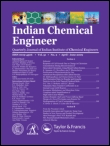
Indian Chemical Engineer
Advancing Chemical Engineering Knowledge.Indian Chemical Engineer, published by Taylor & Francis Ltd, stands as a reputable journal in the field of chemical engineering, encompassing a wide range of topics pertinent to both academia and industry. With an ISSN of 0019-4506 and an E-ISSN of 0975-007X, this journal has been a key resource for researchers and professionals since its inception in 1992, undergoing a significant evolution from 2009 to 2024. Currently ranked in the Q3 category of chemical engineering (miscellaneous) in 2023, it reflects a dedicated commitment to disseminating innovative research and insights within the discipline. The journal is indexed in Scopus, achieving a rank of 148 out of 273, which denotes its growing influence in the field with a 45th percentile placement. Although currently not an open-access publication, it offers valuable content that contributes extensively to the advancement of chemical engineering research and education. Researchers, professionals, and students alike are encouraged to engage with this publication to stay at the forefront of industry advancements and academic discussions.
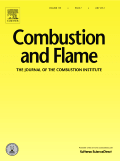
Combustion and Flame
Fueling the Future of Chemical EngineeringCombustion and Flame is a premier academic journal published by Elsevier Science Inc, dedicated to advancing the field of combustion science. Since its inception in 1957, this journal has consistently provided a platform for rigorous research and groundbreaking discoveries in the realms of Chemical Engineering, Chemistry, and Energy Engineering, illustrating a significant Q1 ranking across multiple categories, including Fuel Technology and Physics. With an impressive Scopus ranking, comprising the top 10% in fields such as General Physics and Astronomy, and General Chemical Engineering, Combustion and Flame serves as a critical resource for researchers, professionals, and students aiming to explore the complexities of combustion phenomena and their applications. Although it does not offer open access, the journal is known for its comprehensive articles and innovative research papers, fostering scholarly dialogue and the development of emerging technologies. The journal aims to connect researchers globally, ensuring that important findings are shared and disseminated effectively.
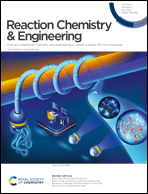
Reaction Chemistry & Engineering
Fostering Collaboration for Chemical Engineering ExcellenceReaction Chemistry & Engineering is an esteemed journal published by the Royal Society of Chemistry, dedicated to advancing the field of chemical engineering. With a focus on pivotal topics including catalysis, process technology, and fluid flow, this journal serves as a critical platform for researchers and professionals seeking to disseminate innovative findings and methodologies. As of 2023, it boasts impressive impact factors, ranking Q2 in Catalysis and consistently appearing in the Q1 categories for several related fields, thus recognizing its influence and relevance in the scientific community. With Scopus rankings placing it among the top 30 journals in multiple chemical engineering categories, Reaction Chemistry & Engineering encourages open dialogue and collaboration among scientists aiming to overcome contemporary challenges in chemical processes. This journal is vital for anyone involved in the development and application of chemical engineering, providing essential insights and fostering progress in this dynamic discipline. Explore the latest research and contribute to future innovations by engaging with the cutting-edge work presented in Reaction Chemistry & Engineering.

International Journal of Chemical Engineering
Unlocking the potential of chemical engineering research.International Journal of Chemical Engineering is a leading peer-reviewed journal published by HINDAWI LTD, dedicated to advancing the field of chemical engineering through innovative research and practical applications. With an impact factor that places it in the Q2 category of Chemical Engineering (miscellaneous), this journal has established itself as a significant resource for researchers and professionals alike, particularly those interested in general chemical engineering topics. Since its transition to Open Access in 2008, the journal has ensured that critical scientific knowledge remains accessible to a global audience, fostering collaboration and interdisciplinary research. With coverage from 2009 to 2024, it continues to be an essential platform for disseminating cutting-edge findings, methodologies, and discussions that shape the future of chemical engineering. For more information, visit their website or access the latest issue directly to explore groundbreaking studies and insights.

THEORETICAL FOUNDATIONS OF CHEMICAL ENGINEERING
Exploring the Depths of Chemical Engineering KnowledgeTHEORETICAL FOUNDATIONS OF CHEMICAL ENGINEERING is an esteemed academic journal published by PLEIADES PUBLISHING INC, dedicated to advancing the field of chemical engineering and chemistry through rigorous theoretical discourse and scholarly communication. With a history of publication dating back to 1974, the journal has been a vital resource for researchers and professionals, contributing to the foundation of knowledge in this multidisciplinary domain. Although it does not offer open-access options, it remains an essential platform for innovative research, boasting a 2023 ranking in the Q3 quartile for both Chemical Engineering and General Chemistry categories. The journal is indexed in Scopus, where it ranks #210 out of 273 in Chemical Engineering and #317 out of 408 in Chemistry, emphasizing its growing relevance within the scholarly community. Researchers, educators, and students alike can benefit from the insights and findings shared within its pages, making it a critical venue for those seeking to enhance their expertise in theoretical chemical engineering.
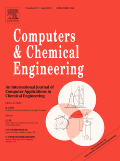
COMPUTERS & CHEMICAL ENGINEERING
Advancing Computational Techniques for Chemical Engineering ExcellenceComputers & Chemical Engineering, published by Pergamon-Elsevier Science Ltd, stands at the forefront of research at the intersection of chemical engineering and computer science. With an ISSN of 0098-1354 and an E-ISSN of 1873-4375, this esteemed journal has been a vital resource since its inception in 1977, with coverage extending to 2025. It is categorized as Q1 in Chemical Engineering (miscellaneous) and Q2 in Computer Science Applications for 2023, highlighting its significant impact within these fields. Notably, the journal boasts impressive Scopus ranks, placing it in the 84th and 82nd percentiles for Chemical Engineering and Computer Science Applications, respectively. A treasure trove for researchers, professionals, and students alike, Computers & Chemical Engineering focuses on the latest trends and innovations in computational techniques, algorithm development, and their applications to chemical processes, ensuring an avenue for groundbreaking findings and collaborative dialogues. While not an open-access publication, it remains a critical reference point for those seeking robust, peer-reviewed research in the rapidly evolving landscape of chemical engineering and computational methods.
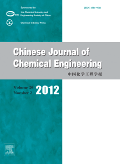
Chinese Journal of Chemical Engineering
Transforming Ideas into Impactful Solutions in Chemical EngineeringChinese Journal of Chemical Engineering, published by CHEMICAL INDUSTRY PRESS CO LTD, is a premier academic journal dedicated to advancing the field of chemical engineering and related disciplines. With a strong emphasis on innovative research and practical applications, the journal spans a wide range of topics including biochemistry, environmental engineering, and general chemistry. Boasting a commendable impact factor and a consistent presence in Q2 quartiles across multiple categories, it ranks impressively in Scopus, notably positioned in the top percentile of its fields, enhancing its credibility and reach among the scientific community. Published continuously since 1993 and converging towards its 2024 goals, the journal remains committed to fostering sustainable and impactful research. Researchers, professionals, and students alike will find invaluable resources and cutting-edge insights, making the Chinese Journal of Chemical Engineering an essential platform for disseminating pivotal work in the realms of chemical and environmental sciences.
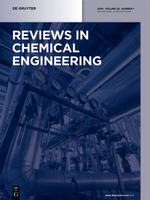
REVIEWS IN CHEMICAL ENGINEERING
Fostering Interdisciplinary Collaboration and Innovation.REVIEWS IN CHEMICAL ENGINEERING, published by Walter de Gruyter GmbH, is a premier journal that delivers cutting-edge insights and comprehensive reviews in the field of chemical engineering. Established as an eminent resource since 1982, this journal is committed to advancing knowledge and fostering innovation in various domains of chemical engineering, including process design, materials, and environmental considerations. With an impressive Q1 ranking in the 2023 Scopus category for Chemical Engineering and a commendable 20th position out of 273 journals, it is recognized for its rigorous peer-review process and high-impact contributions. Although it operates under a subscription model, the journal remains a vital platform for researchers and professionals aiming to stay at the forefront of technological advancements and scholarly discourse in chemical engineering. With a focus on interdisciplinary applications and real-world relevance, REVIEWS IN CHEMICAL ENGINEERING is an indispensable resource for academics, industry professionals, and students dedicated to excellence in this field.